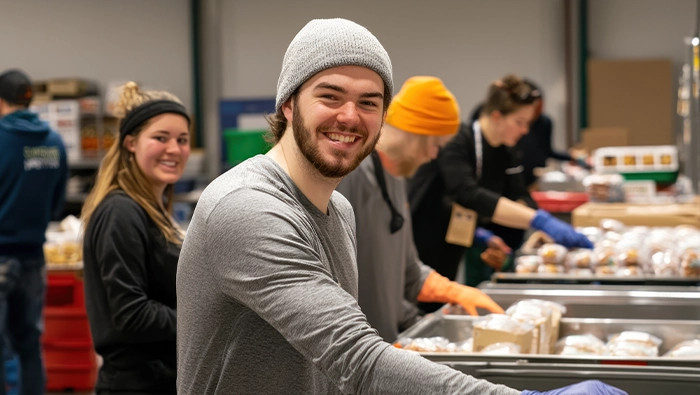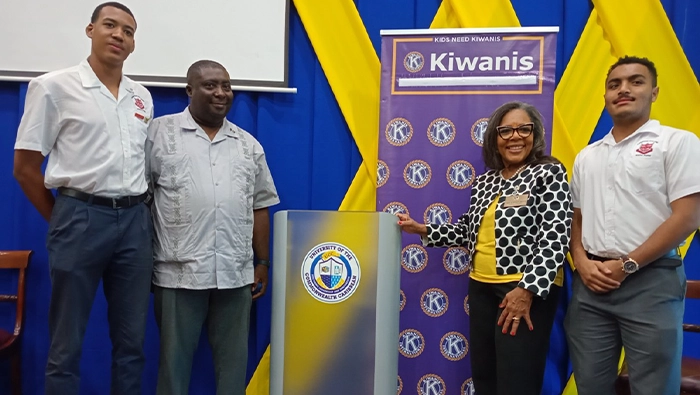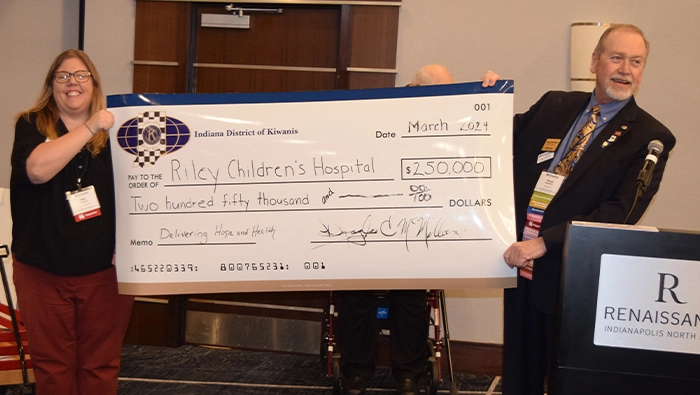
5 community connections for any club
Whether your club is large, small or in between, these ideas can revitalize service and community engagement.
By Destiny Cherry
Finding service projects can seem daunting for a new Kiwanis club — or when members of an established club run out of ideas. One way to revitalize your club’s service is to connect with organizations in the community. These five community connections can help a club of any size find projects to strengthen local engagement and uplift children and families:
- Connect with a local food bank, pantry or soup kitchen. These organizations give your Kiwanis club two major opportunities: donating time and donating resources. Depending on the availability of club members, a service project can involve donating your time: sorting and storing donations, preparing and serving food to those in need or helping to ration and distribute food. It can also involve donating resources: organizing a can drive within your club and the community and donating proceeds. However your club decides to get involved, this is typically an easy, accessible way to make a large, lasting impact.
- Build connections with a local recreational facility. A nearby recreational facility or community center — such as a YMCA location — might offer a variety of opportunities to get involved. This could include members of your club coaching or serving as an assistant with young sports teams, assisting in childcare centers, lifeguarding at a pool or helping to set up, tear down or supervise the facility’s sponsored events. Each service project is both an opportunity to empower kids through movement and a fun way for members of your club to get involved.
- Partner with schools in your community. Connecting with a local school can result in a lasting partnership and a lasting impact. Some ways to get involved include reading books to younger children, holding a book drive, chaperoning school-sponsored events, tutoring kids in afterschool programs and mentoring.
- Support a local children’s hospital. Get your club and the community involved with a toy drive, write kind notes to patients during the holidays or do activities with the patients and their siblings. Your club could also host a “dance marathon” for adults — challenging them to stay standing or “dance” for an extended period, during which people are encouraged to participate or donate money. This initiative encourages people to “stand” for children who can’t.
- “Build up” the community at construction sites. With the right research, your club can assist with building homes, community and wellness centers, school extensions or playgrounds — all spaces that nurture the growth, learning and safety of children. Site managers can help ensure that all activities are safe and age-appropriate, with the necessary safety equipment provided on-site. Club members would only need to bring closed-toe shoes, comfortable clothing (preferably something they don’t mind getting dirty) and a desire to do some work. Possible tasks include hammering nails, moving smaller debris prebuild, drilling or screwing in nails, painting or minor site cleanup. Tasks can be tailored to each member’s comfort level, and site managers can offer guidance and answer questions along the way.
Connecting through fundraising
Fundraising projects and events can make connecting with your community much easier. Once a connection is made, your new partners can make finding service projects a lot easier. If you’re not sure where to start and want to see what has worked for other clubs, visit the fundraising page on our website. And check out our blog post with other tips for your fundraiser.
Don’t forget Kiwanis International’s new partner, Givergy, which provides a platform for fundraising events and projects, with no upfront costs. Learn more!


